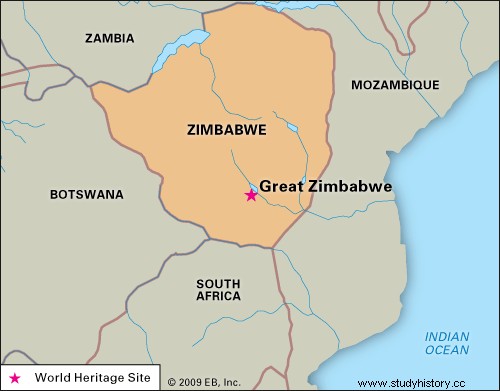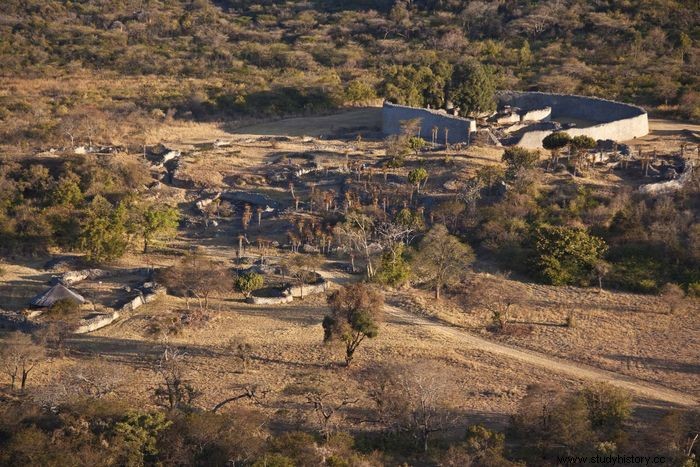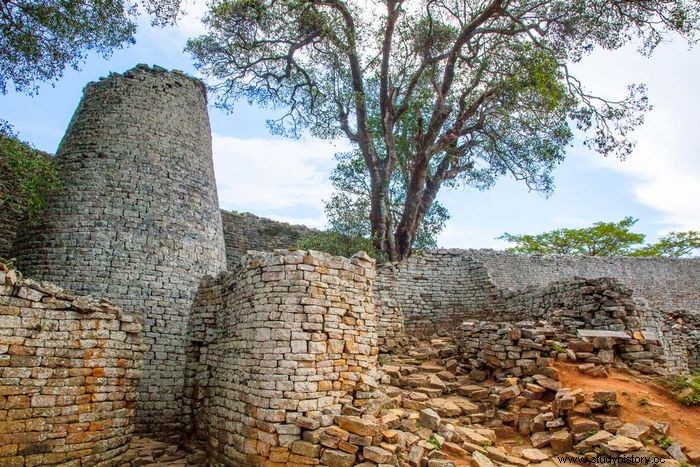Greater Zimbabwe , extensive stone ruins of an African City from Iron Age . It's in the southeast Zimbabwe , about 30 km southeast of Masvingo (formerly Fort Victoria). The central area of the ruins covers 80 hectares, making Great Zimbabwe the largest of more than 150 great stone ruins found in the countries of Zimbabwe and Mozambique scattered .
 Britannica Quiz Exploring Africa:Fact or Fiction? Though this continent is teeming with natural resources and diverse wildlife, how much do you really know about Africa? Sort these facts from Cairo to Khartoum in this African odyssey.
Britannica Quiz Exploring Africa:Fact or Fiction? Though this continent is teeming with natural resources and diverse wildlife, how much do you really know about Africa? Sort these facts from Cairo to Khartoum in this African odyssey. It is estimated that the central ruins and surrounding valley are a Shona supported population of 10,000 to 20,000 people. With an economy based on ranching, farming and gold trading on the coast Indian Ocean based , Great Zimbabwe was the heart of a thriving trading empire from the 11th to the 15th centuries. The word Zimbabwe, the country's namesake is a Shona (Bantu) word, which means "stone houses".
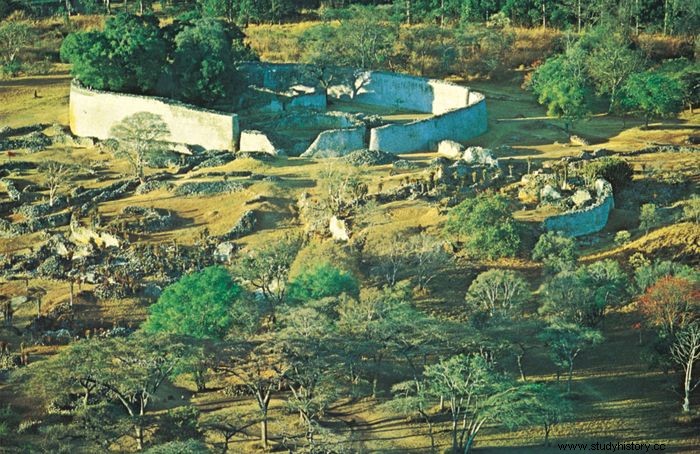
The site is typically divided into three main areas:the Hill Complex, the Great enclosure and the valley ruins. The first two feature mortarless stone construction, but also include ruins Daga structures (earthen and adobe) that may have once rivaled the stone buildings in size. The valley ruins, located between the mound complex and the Great Ward, comprise a large number of mounds, the remains of Daga- buildings.
The The Hill Complex, formerly known as the Acropolis, is considered the spiritual and religious center of the city. It sits atop a steep hill rising 80 meters above the ground, and its ruins span 100 meters by 45 meters. It's the oldest part of the site; Stratigraphic evidence shows that the first stones were laid there around the year 900. The builders built natural Granite Blocks and rectangular blocks to form walls up to 6 meters thick and 11 meters high. Within the walls are the remains of Daga- houses.
South of the Hill Complex lies the Great Enclosure, the largest single ancient structure in sub-Saharan Africa. The outer wall has a circumference of 250 meters and a maximum height of 11 meters. An inner wall runs along part of the outer wall, forming a narrow parallel passage 55 meters long that leads to the conical tower. The purpose of the tower, which is 10 meters high and 5 meters in diameter, is unknown, but it may be a symbolic grain bin or a phallic symbol.
Greater Zimbabwe was largely abandoned in the 15th century. With the city's decline, stone carving and pottery techniques appear to have shifted south to Khami (now also in ruins). Portuguese explorers probably came across the ruins in the 16th century, but it was not until the late 19th century that the ruins' existence was confirmed, prompting much archaeological research. European explorers who visited the site in the late 19th century believed it to be the legendary city Ophir where King Solomon's mines were located. Due to its masonry and other evidence of advanced Culture the site has been variously and incorrectly attributed to ancient civilizations such as the Phoenicians, Greeks or Egyptians. 1905 the English archaeologist David Randall-MacIver concluded that the ruins medieval and were exclusively of African origin. Its results were 1929 by English archaeologist Gertrude Caton-Thompson confirmed .
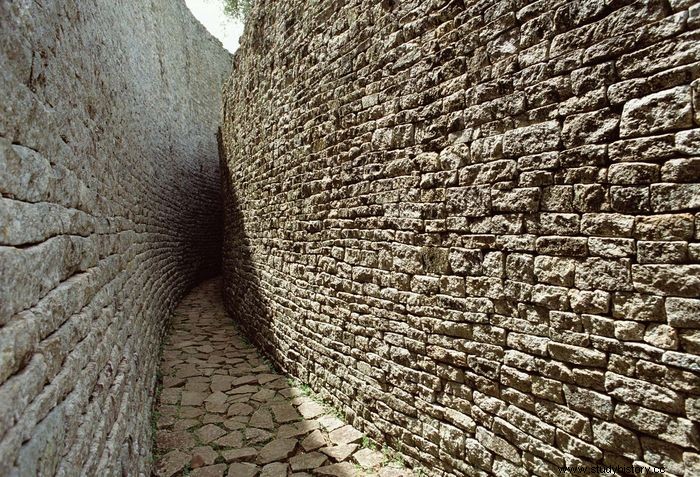
In the late 19th century numerous soapstone figures in the shape of a bird were found in the ruins; This Zimbabwe bird later became a national symbol, incorporated into the Zimbabwe flag and shown with high honor in other places. Greater Zimbabwe became a national monument and was denoted as a World Heritage Site in 1986. However, despite its historical importance and nationalistic role, the site has insufficient government funding for its conservation and scientific research Investigation received.

